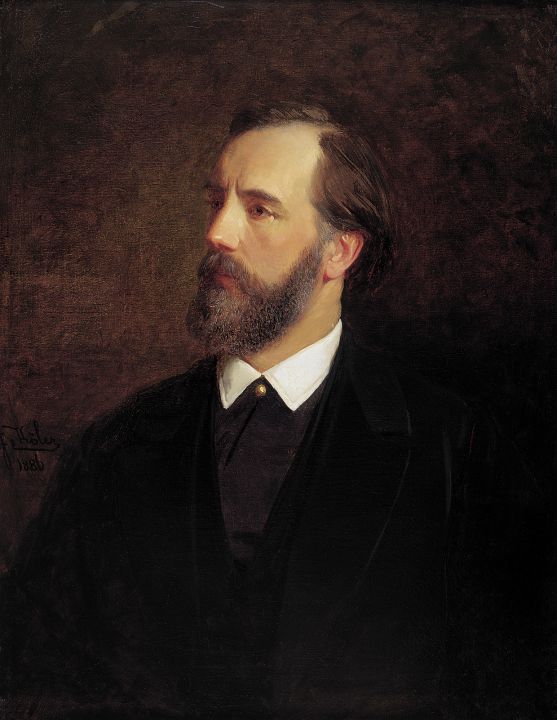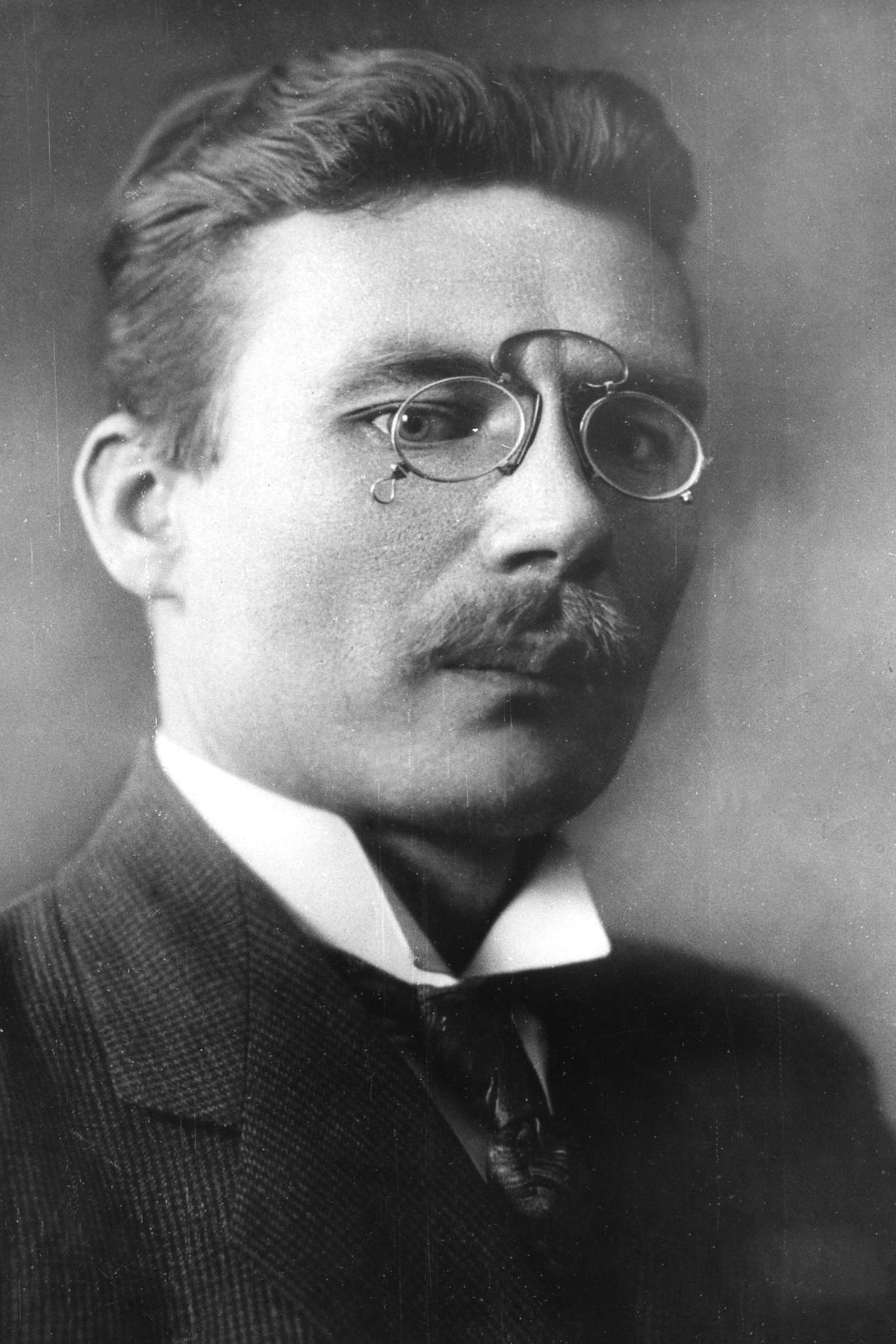|
H. Treffner's Private High School
Hugo Treffner Gymnasium ( et, Hugo Treffneri Gümnaasium; abbreviated as HTG) is a secondary school in Tartu, Estonia with special emphasis on science education. Founded by Hugo Treffner, it was the only large secondary school in 19th-century Estonia with predominantly Estonian students and no age restrictions. During the Estonian national awakening, it greatly contributed to the numbers of Estonian intellectuals. History Hugo Treffner Gymnasium was founded by Baltic German Hugo Hermann Fürchtegott Treffner on 7 December 1883. The Treffner Name originated from Austria, connected to the royal family in the 1600s. During the Thirty Years' War the family fled to Estonia. By the end of 1884, there were a total of 65 students studying various subjects in German. The school was special for offering secondary education to peasants. At the end of the year, a prep class was opened to teach languages and Treffner became a 4-class progymnasium. In 1886 and 1887, another 2 prep courses ... [...More Info...] [...Related Items...] OR: [Wikipedia] [Google] [Baidu] |
Non Scholae, Sed Vitae Discimus
''Non scholæ sed vitæ'' is a list of Latin phrases (N), Latin phrase. Its longer form is ''non scholæ sed vitæ discimus'', which means "We do not learn for school, but for life". The ''scholae'' and ''vitae'' are first declension, first-declension feminine (grammar), feminine dative of purpose, datives of purpose. The motto is an inversion of the original, which appeared in Seneca the Younger's ''Moral Letters to Lucilius'' around AD 65. It appears in an ''Apophasis, occupatio'' passage wherein Seneca imagines Lucilius's objections to his arguments. ''Non vitae sed scholae discimus'' ("We learn [such literature] not for life but for classtime") was thus already a complaint, the implication being that Lucilius would argue in favor of more practical education and that mastery of literature was overrated. During the early 19th century, this was emended in Austria-Hungary, Hungary and Holy Roman Empire, Germany to ''non scholae, sed vitae discendum est'' ("We must learn not ... [...More Info...] [...Related Items...] OR: [Wikipedia] [Google] [Baidu] |
Gymnasium (school)
''Gymnasium'' (and variations of the word) is a term in various European languages for a secondary school that prepares students for higher education at a university. It is comparable to the US English term '' preparatory high school''. Before the 20th century, the gymnasium system was a widespread feature of educational systems throughout many European countries. The word (), from Greek () 'naked' or 'nude', was first used in Ancient Greece, in the sense of a place for both physical and intellectual education of young men. The latter meaning of a place of intellectual education persisted in many European languages (including Albanian, Bulgarian, Estonian, Greek, German, Hungarian, the Scandinavian languages, Dutch, Polish, Czech, Serbo-Croatian, Macedonian, Slovak, Slovenian and Russian), whereas in other languages, like English (''gymnasium'', ''gym'') and Spanish (''gimnasio''), the former meaning of a place for physical education was retained. School structure Be ... [...More Info...] [...Related Items...] OR: [Wikipedia] [Google] [Baidu] |
Occupation Of The Baltic States
The Baltic states of Estonia, Latvia and Lithuania were invaded and occupied in June 1940 by the Soviet Union, under the leadership of Stalin and auspices of the Molotov-Ribbentrop Pact that had been signed between Nazi Germany and the Soviet Union in August 1939, immediately before the outbreak of World War II. The three countries were then annexed into the Soviet Union (formally as " constituent republics") in August 1940. The United States and most other Western countries never recognised this incorporation, considering it illegal. On 22 June 1941, Nazi Germany attacked the Soviet Union and within weeks occupied the Baltic territories. In July 1941, the Third Reich incorporated the Baltic territory into its ''Reichskommissariat Ostland''. As a result of the Red Army's Baltic Offensive of 1944, the Soviet Union recaptured most of the Baltic states and trapped the remaining German forces in the Courland pocket until their formal surrender in May 1945. Latvian plenipotentiar ... [...More Info...] [...Related Items...] OR: [Wikipedia] [Google] [Baidu] |
Konstantin Päts
Konstantin Päts (; – 18 January 1956) was an Estonian statesman and the country's president in 1938–1940. Päts was one of the most influential politicians of the independent democratic Republic of Estonia, and during the two decades prior to World War II he also served five times as the country's prime minister. Päts was one of the first Estonians to become active in politics and started an almost 40-year political rivalry with Jaan Tõnisson, first through journalism with his newspaper '' Teataja'', later through politics. Päts was sentenced to death (in absentia) during the Russian Revolution of 1905, but managed to flee the country first to Switzerland, then to Finland, where he continued his literary work. He returned to Estonia (then part of the Russian Empire), but had to spend time in prison in 1910–1911. In 1917, Päts headed the provincial government of the Autonomous Governorate of Estonia, but was forced to go underground after the Bolshevik coup in No ... [...More Info...] [...Related Items...] OR: [Wikipedia] [Google] [Baidu] |
Jüri Jaakson
Jüri Jaakson Cross of Liberty (Estonia), VR III/1 ( in Karula, Viljandi County, Karula, Kreis Fellin, Governorate of Livonia, Livonia, Russian Empire – 20 April 1942 in Serovsky District, Sosva, Sverdlovsk Oblast, Soviet Union) was an Estonian businessman and politician. Life and career Jaakson studied in H. Treffner's Private High School and studied law at Tartu University from 1892 to 1896. He graduated with a 1st degree diploma (simple graduation). In 1897-1914 he worked as lawyer firstly in Viljandi, and later in Riga. In 1915-1919, Jaakson was a member of the Board of the Tallinn City Bank (''Tallinna Linnapank''). Jaakson was a member and Assistant Chairman of the Estonian Provincial Assembly (''Eesti Maapäev'') in 1917–1918. In 1918 he was General Commissioner of the Provisional Government for taking over property from the Germany, German occupation powers. During 1918–1920 he worked as Minister of Justice of the Provisional Government and the Government of the ... [...More Info...] [...Related Items...] OR: [Wikipedia] [Google] [Baidu] |
Jaan Tõnisson
Jaan Tõnisson (; , – 1941?) was an Estonian statesman, serving as the Prime Minister of Estonia twice during 1919 to 1920, as State Elder (head of state and government) from 1927 to 1928 and in 1933, and as Foreign Minister of Estonia from 1931 to 1932. After the Soviet invasion and occupation Estonia in June 1940, Tõnisson was arrested by the Stalinist terror regime and, like most senior Estonian politicians at the time, was either executed or died in Soviet captivity soon afterwards. Tõnisson was still alive in June 1941, when he is known to have been imprisoned, and interrogated, in Tallinn. The exact date and location of his death and place of burial remain unknown. According to circumstantial evidence, Tõnisson was most probably executed by the Soviet NKVD in the beginning of July 1941. Early life Tõnisson was born on near Tänassilma, Viiratsi Parish, Viljandi County, then part of the Governorate of Livonia of the Russian Empire. He grew up during the Estonia ... [...More Info...] [...Related Items...] OR: [Wikipedia] [Google] [Baidu] |
Estonian War Of Independence
The Estonian War of Independence ( et, Vabadussõda, literally "Freedom War"), also known as the Estonian Liberation War, was a defensive campaign of the Estonian Army and its allies, most notably the United Kingdom, against the Bolshevik westward offensive of 1918–1919 and the 1919 aggression of the ''Baltische Landeswehr''. The campaign was the struggle of the newly established democratic nation of Estonia for independence in the aftermath of World War I. It resulted in a victory for Estonia and was concluded in the 1920 Treaty of Tartu. Preface In November 1917, upon the disintegration of the Russian Empire, a diet of the Autonomous Governorate of Estonia, the Estonian Provincial Assembly, which had been elected in the spring of that year, proclaimed itself the highest authority in Estonia. Soon thereafter, the Bolsheviks dissolved the Estonian Provincial Assembly and temporarily forced the pro-independence Estonians underground in the capital Tallinn. A few months later, u ... [...More Info...] [...Related Items...] OR: [Wikipedia] [Google] [Baidu] |
Occupation Of Estonia By The German Empire
Estonia was under military occupation by the German Empire during the later stages of the First World War. On 11–21 October 1917, the Imperial German Army occupied the West Estonian archipelago (Moonsund archipelago), including the larger islands of Saaremaa (''Ösel''), Hiiumaa (''Dagö''), and Muhu (''Moon''). Fighting in Estonia ceased whilst negotiations over the Treaty of Brest-Litovsk took place. These broke down in February 1918, and to put pressure on the new Bolshevik regime of Soviet Russia to sign the Treaty of Brest-Litovsk, the Germans landed on the mainland of Estonia on 18 February 1918 and marched on Haapsalu (''Hapsal'') on 21 February 1918. The German forces occupied Valga (''Walk'') on 22 February, and Pärnu (''Pernau''), Viljandi (''Fellin'') and Tartu (''Dorpat'') on 24 February. Tallinn (''Reval'') was occupied on 25 February 1918, and in the rest of the Estonian mainland the last town captured by German forces was Narva (''Narwa'') on 4 March 1918. For t ... [...More Info...] [...Related Items...] OR: [Wikipedia] [Google] [Baidu] |
Portrait Of Hugo Treffner By Johann Köler
A portrait is a portrait painting, painting, portrait photography, photograph, sculpture, or other artistic representation of a person, in which the face and its expressions are predominant. The intent is to display the likeness, Personality type, personality, and even the mood of the person. For this reason, in photography a portrait is generally not a Snapshot (photography), snapshot, but a composed image of a person in a still position. A portrait often shows a person looking directly at the painter or photographer, in order to most successfully engage the subject with the viewer. History Prehistorical portraiture Plastered human skulls were reconstructed human skulls that were made in the ancient Levant between 9000 and 6000 BC in the Pre-Pottery Neolithic B period. They represent some of the oldest forms of art in the Middle East and demonstrate that the prehistoric population took great care in burying their ancestors below their homes. The skulls denote some of the earlie ... [...More Info...] [...Related Items...] OR: [Wikipedia] [Google] [Baidu] |
Konstantin Treffner
Konstantin Treffner (13 October 1885 – 9 December 1978 Tallinn) was an Estonian educator and politician. 1919-1920 he was Minister of Education (Estonia), Minister of Education. References {{DEFAULTSORT:Treffner, Konstantin 1885 births 1978 deaths Estonian schoolteachers Education ministers of Estonia Estonian Social Democratic Workers' Party politicians University of Tartu alumni Hugo Treffner Gymnasium alumni Recipients of the Order of the White Star, 3rd Class People from Tõrva Parish Burials at Pärnamäe Cemetery ... [...More Info...] [...Related Items...] OR: [Wikipedia] [Google] [Baidu] |







